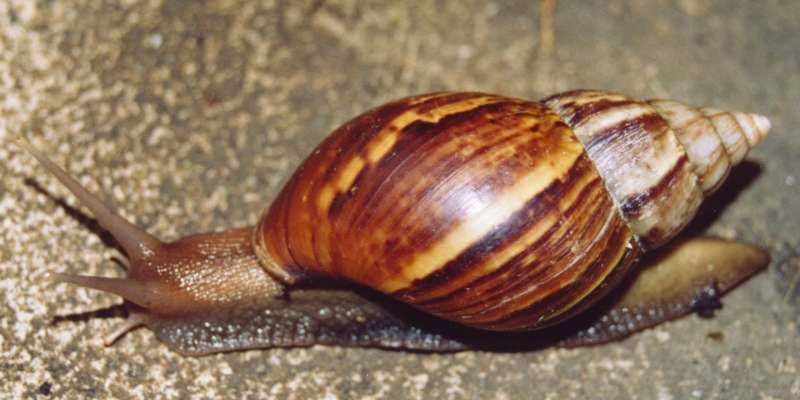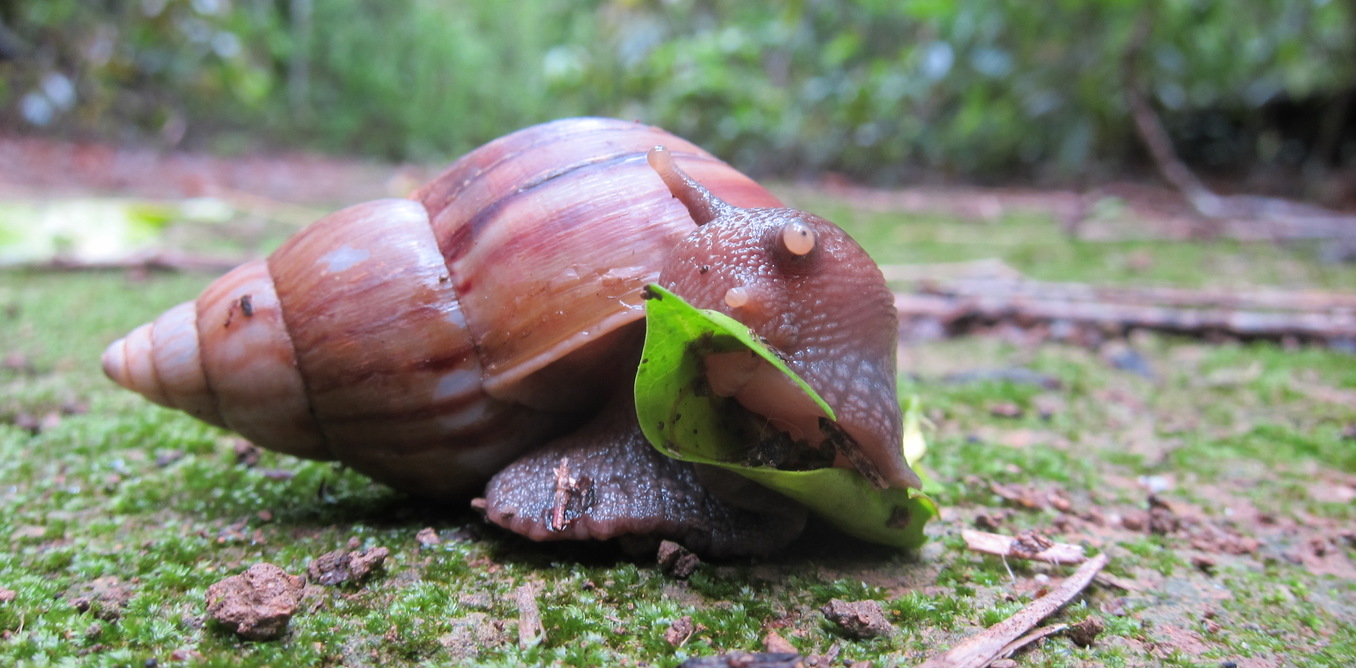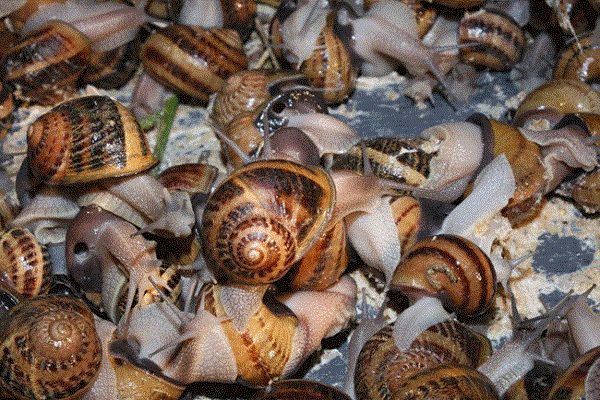How to set up a snail farm business in Nigeria Snail farming, or heliculture as it is popularly called, is the domestication of snails. In simpler terms, helicuture is the rearing of snails at home-like we do chicken or rabbits- for food and profit. This farming of snails even though not as popular as chicken and fish farming is almost as lucrative, if not more lucrative since snails are heavily consumed both locally and internationally.
 How to set up a snail farm business in Nigeria
How to set up a snail farm business in Nigeria
Would you like to set up your own snail farm business in Nigeria?
Here’s how.
How much do you need to start a snail farm?
Snail farming is not as capital intensive as other forms of farming. Due to the ‘crawling nature’ of snails, a snail farm needs not to be elaborate, hence; it can be built from material you have around your house.
It is noteworthy that the capital you will need to begin the venture will be determined mostly by the scale at which you want to operate; whether a small scale, medium scale or large scale farm. Nevertheless, some noteworthy questions are:
- Do I have the materials needed to build the farm or am I going to buy them
- Do I have a land on which I will operate my snail farm?
- What will it cost me to stock my farm?
- How much will it cost me to run the farm till the snails are ready for harvesting?
That being said, with a hundred thousand naira (N100,000) only, you can begin a medium scale snail farm that could gross in five times your initial investment.
Suitable Environment for Snail Farming
Snails are easily dehydrated, and wind increase the rate of moisture loose in snail which in turn, leads to the dryness of the animal. To prevent snails from losing water so quickly, your snaileries (the snail house) must be located in environment that is protected from wind.
A low plain, downhill site surrounded with enough trees is perfect for snail farming. You may plant plantains and bananas around your snail farm to prevent the impact of wind.
 How to set up a snail farm business in Nigeria
How to set up a snail farm business in Nigeria
Type of Soil For Snail Farming
Snail’s major habitat is the soil, and soil contains some of the components and chemical substances that it needed to survive. However, not all soils are suitable for snail rearing. The shell of the snail is mainly calcium and it derive most of them from the soil. Snail also lay it’s eggs on the soil and drink water out of the soil.
Hence, the suitable soil for snail farming must contain these elements. Must be balanced, not waterlogged, not too dry, and must not be acidic. The most desirable soil for snail is sandy-loamy soil with low water holding capacity. Clayey soil and acidic soil must be avoided.
Where to source for your snails
Mature adult snails for farming business could either be sourced from deep forests or from a snail Farm. The only place you shouldn’t buy snails for rearing is your city and local markets. Live snails from such markets are usually stressed and are best for your pot.
Feeding your snails
Feeding is one of the most important factors in snail farming. Snails are easy to feed, they will feed on nearly every organic food source that is non-toxic, including leaves, fruits, vegetables, tubers and household wastes that does not contain table salt. Snails enjoy common food such as fruits and vegetables like banana, melon, cabbage, carrot, pawpaw, lettuce, cucumber, potato, pumpkin, plantain etc. you can equally formulate special feeds for your snails.
It is also encouraged to give calcium supplement to your snails once in a while to help them in the formation of their shells.
 How to set up a snail farm business in Nigeria
How to set up a snail farm business in Nigeria
WHICH SNAIL SPECIES ARE SUITABLE FOR SNAIL FARMING?
1) Achatina Fulica – The East African Snail. It is a species of large, air-breathing land snail belonging to the family Achatinidae. It is the most commonly available and widespread type of African land snail and also the smallest in size among all the desirable species for commercial snail farming.
Achatina Fulica has a narrow, conical shell, which is twice as long as it is wide and contains 7 to 9 whorls when fully grown.
The shell is generally reddish-brown in color with weak yellowish vertical markings but coloration varies with environmental conditions and diet.
Average adult shell length is 12cm, with a diameter of 6cm. Most of the growth is achieved within the first 6 months but they do continue to grow for another year or so.
They lay up to 30-1000 White/Yellow eggs, 4-5mm in diameter, up to 6 times a year.
2) Achatina Achatina – They are commonly known as the giant African land snail.
They are the largest land snails in the world and also the most widely sought after species.
Average adult shell length is 18cm, with an average diameter of 9cm.
They may possess between 7-8 whorls and the shell is often broadly ovate. The body of the animal is silver-brown in color although albino morphs may exist.
Giant African land snails are hermaphrodites.
They lay between 30-300 eggs per clutch and under normal, stable conditions the hatching viability appears to be 90+%.
They live up to 10 years, usually 5-7.
3) Archachatina Marginata
Popularly called the giant West African snail.
Average size and lifespan are 16cm long and live 5years respectively.
Of the three species listed above, Achatina Achatina is the most popular snail species for commercial snail farming globally.
It has a relatively high yield capacity. Thus giving room for increased yields.
Therefore, if you start a farm with about 2000 snails, it is possible that you would have about 2.5 million snails in just 2 years.
Building Your Snailery
The type and size of the snailery you build will largely depend on the breed and amount you’re planning on raising. Snail farms can be extensive, intensive, or semi-intensive. One option for your snail farm would be to dig a trench and cover it completely with screen or wire. You may also choose to build a structure from concrete, wood, or other materials, making sure once again to completely cover it with wire or screen. You will also need to make sure you have at least ten inches of soil.
If you prefer not to use wire, you can choose to build a covered box. Snails are a lot stronger than you might realize, though, so make sure the box is secure to avoid having your snails escape.
Maturity
Maturity takes 2 years . Only matured snails should be harvested. Check the brim of the shell. For matured snails, the brim is thicker and harder than other parts of the shell. Do not harvest all the matured ones for the market. Keep a few for breeding and to serve as the base stock.
Pests and Diseases
Termites, lizards, snakes, ants, chickens, geese and turkeys are the common enemies of snails and should be prevented by all means.
If a large army of soldier ants discover your snail farm, you can lose all of your snails in just one day.
If you need more information or would like to book a consulting session with us, you can call us on 08105636015 or 08076359735. Alternatively, you can send a mail to dayohub@gmail.com
Related